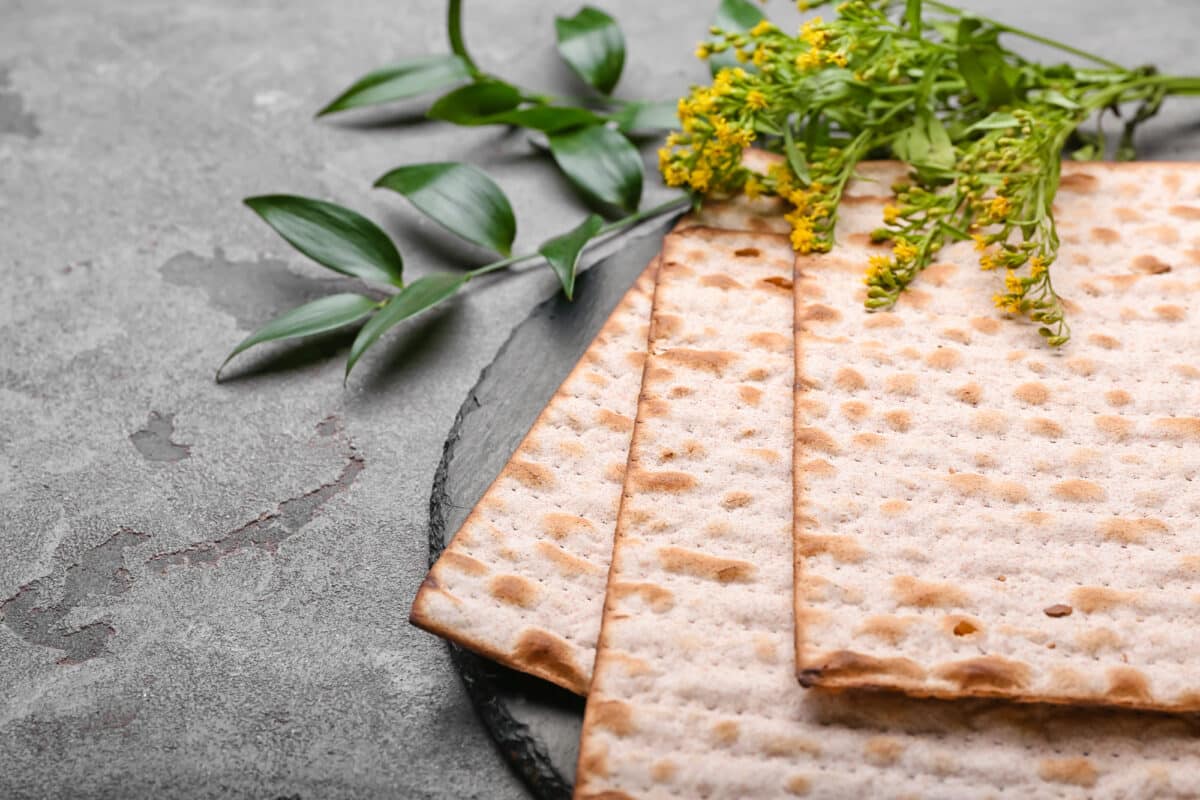Chametz and Kitniyot
During Passover, the dietary restrictions are centered around the prohibition of chametz, which refers to five major grains (wheat, barley, rye, oats, and spelt) that have come into contact with water and have been allowed to ferment and rise. This prohibition stems from the biblical commandment to avoid leavened bread during the holiday, commemorating the Israelites’ hasty departure from Egypt, which did not allow time for their bread to rise.
Forbidden foods
During Passover all products made from these grains are forbidden unless they are labeled as kosher for Passover. This includes bread, pasta, cereals, and many processed foods. Additionally, Ashkenazi Jews traditionally also avoid kitniyot*, which includes rice, corn, peanuts, and legumes, although this custom is not based on the prohibition of chametz and has been relaxed in some communities in recent years.
Allowed foods
During Passover fruits, vegetables, meat, poultry, fish, eggs, and dairy products, provided they have been prepared in accordance with Passover laws are allowed. Matzah, an unleavened bread, is a staple food during the holiday.
Quinoa is considered kosher for Passover by many Jewish authorities. It is a non-grain that can be used as a substitute for prohibited grains during Passover because it does not ferment or rise. However, it is essential to ensure that the quinoa has not been processed or packaged in facilities that also handle chametz, to avoid cross-contamination. Some authorities require special Passover certification for quinoa. Leah Koenig writes in The Jewsih Table:
…today, kosher-for-Passover certified quinoa, quinoa flour, and breakfast-ready quinoa flakes are readily available. There are other grain-like seeds and grasses—like millet and buckwheat—that could, and very arguably should, be declassified from their “kitniyot” status too. But as of yet, there hasn’t been enough public demand to spark the change.
The dietary rules for Passover vary between Ashkenazi and Sephardic Jewish traditions. These are the two major cultural groups within Judaism, each with distinct customs, liturgical practices, and culinary traditions, especially evident during Passover. The rules are detailed and vary but the overarching goal is to avoid chametz as a way of remembering the haste of the Exodus and to engage in a symbolic act of purification and renewal.
Culinary Traditions
Ashkenazi Jews
originate from Eastern Europe and Germany. Their Passover cuisine typically includes gefilte fish, matzah ball soup, and brisket. They traditionally avoid kitniyot* during Passover, which encompasses rice, corn, peanuts, and legumes, in addition to chametz. This restriction is not based on the biblical prohibition but on a more stringent interpretation to prevent confusion and ensure no chametz is consumed.
Sephardic Jews
trace their roots to Spain, Portugal, North Africa, and the Middle East. Their Passover meals might feature dishes like lamb, rice-based meals, and charoset made with dates. Sephardic communities do not traditionally avoid kitniyot, allowing for a wider variety of foods during Passover.
About the author
Editorial Staff
Contributor

